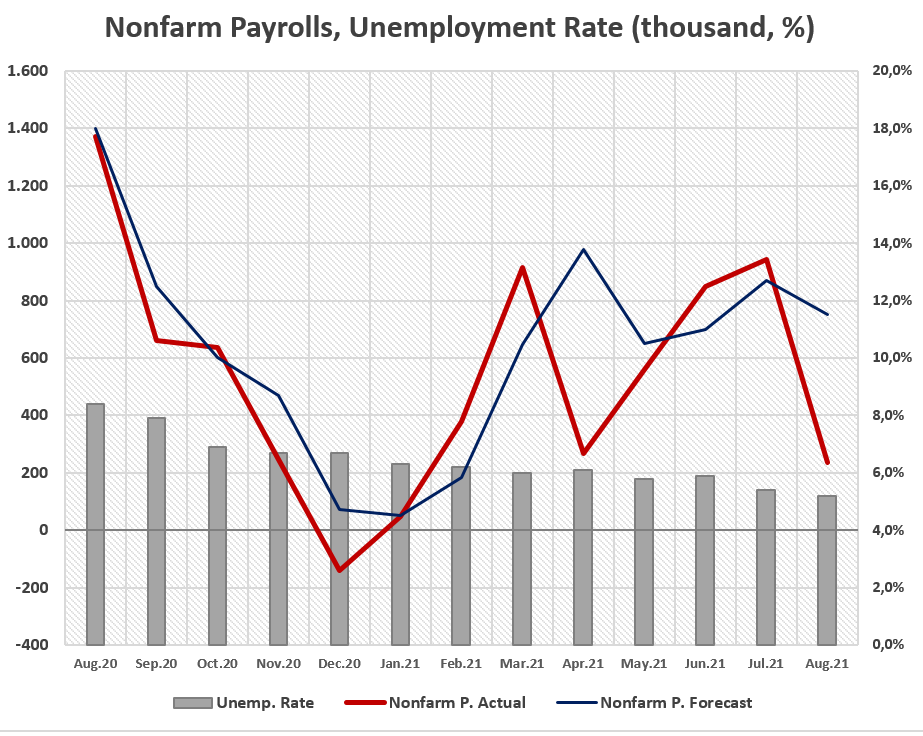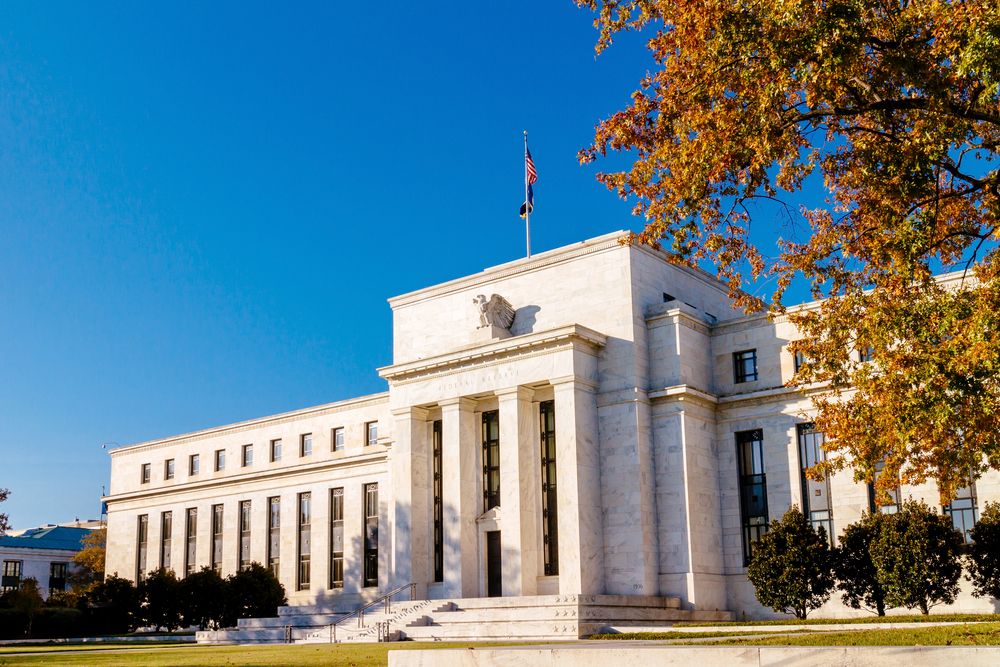Nonfarm Payrolls Data has been effective on Asset Prices
After the data set announced by the Bureau of Labor Statistics (BLS) of the US Department of Labor yesterday, we witnessed a high volatility in international markets. Despite the fact that the labor statistics of the US Federal Reserve (Fed), which has become the main determinant of the future of asset purchases, remained well below market expectations, except for ordinary conditions, there was a significant increase in global investor risk appetite.
In the data announced by the Bureau for August, nonfarm payrolls did not come close to the expectations of 750 thousand and increased only by 235 thousand, while the unemployment rate was registered as 5.2 percent, in line with the forecast. In this period, while the average hourly earnings on a monthly basis increased by 0.6 percent, the labor force participation rate was 61.7 percent and the number of unemployed persons was recorded as 8.3M.
* In the composite chart, nonfarm payrolls data divided by thousand is shown on the left axis and the percentage change in unemployment rate is shown on the right axis.
Although the announced data set was well below the forecasts, prices were balanced in the expectations that the Fed will delay the reduction of asset purchases for a while in the first quotations. Statements of the hawkish members of the Federal Open Market Committee (FOMC) that a few more employment data should be observed before asset purchases are reduced was also effective on the price charts.
Signals indicating that the recovery in the labor market has slowed down in the USA, which is the largest economy in the world under ordinary market conditions, is considered as a negative factor in terms of investor stress. However, while the effects of the delta variant continue and inflationary expectations are eased, the projections that Fed would continue to purchase assets at the current pace in order to support the path to full employment were decisive in asset prices.
SP500 futures, which are in a position to guide the global stock markets, broke a record by climbing to 4552, and the 10-year treasury yields, which are considered as benchmark in the debt market, declined by almost 1.28%.





